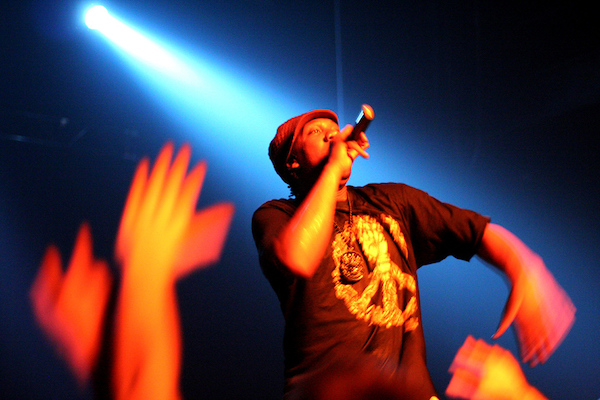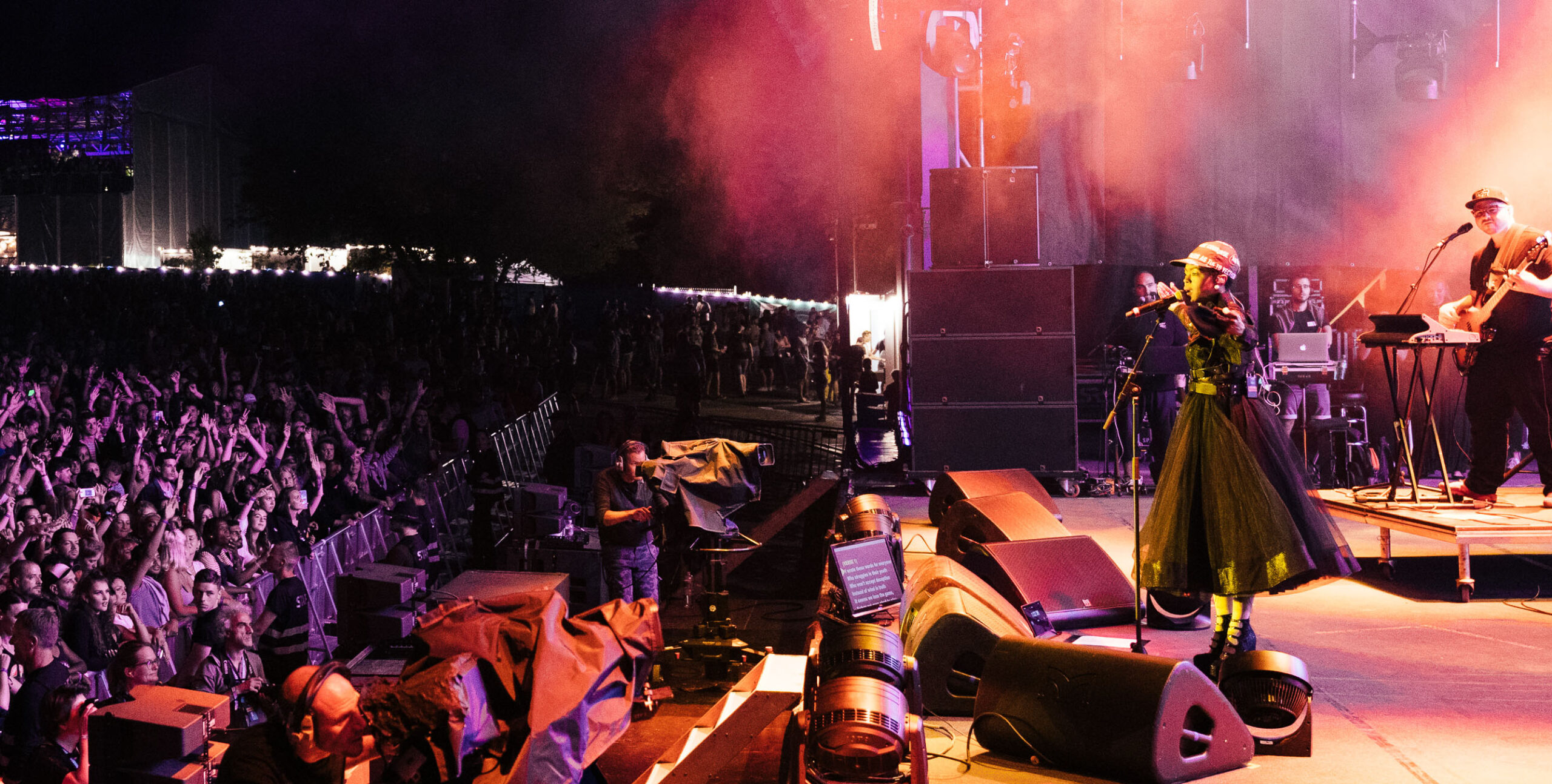“We will be here forever,” the legendary KRS One told us on the opening track (“KRS One Attacks”) of one of his many classic Hip Hop albums, Return of the Boom Bap (1993). The “return of the boom bap” is a phrase that relies on a time-honored onomatopoeia referencing Hip Hop’s embrace of musical breaks that feature hypnotic backbeats.
Boom. Bap.
The beat of Hip Hop culture lives. It will be here forever. It’s hard to believe that Return of the Boom Bap was released 30 years ago. But so it goes. And so goes the legacy of Hip Hop culture, which somehow turns 50 years old this week. In many ways, Hip Hop’s story, its history, is a series of returns powered by an impulse for reclamation.
Reclaiming public spaces and utilities — trains, street corners, parks, and abandoned urban landscapes — were early hallmarks of the culture. Early graffiti artists earned city-wide fame by painting well-traveled subway trains. Early DJ’s siphoned electric energy from public light posts to power the earliest Hip Hop jams. And B-boys and B-girls danced in the streets — or anywhere really. The ‘B’ is for breaks, as in breakbeats and musical breakdowns that highlight breakbeats — the most danceable moments from the funk and soul music that Hip Hop regularly references.
The beat of Hip Hop culture lives. It will be here forever.
Hip Hop’s impulse to reclaim almost always requires a return to the site where culture has been lost, stolen, or erased. And the earliest iterations of Hip Hop reclaimed a decrepit post-industrial landscape in order to repurpose it for the cultural edification of inner-city youth in New York City, and almost immediately for youth across America, and eventually for youth all over this world. In short, the Boom Bap is always returning and the beat of Hip Hop culture is designed to reclaim what is now the birthright of Black musical culture — to exist (and sometimes thrive) in the midst of our late-stage global capitalist project.
Observing and wrestling with the world
This week, many conscious observers of Hip Hop culture will return to 1520 Sedgwick Avenue in the Morris Heights neighborhood of the Bronx — recognized as the birthplace of Hip Hop Culture — for a series of programs and performances to celebrate Hip Hop’s jubilee moment. In physics, an observer is someone who makes an observation, according to philosopher David Chalmers. But the act of observation, in physics and in the world, signals consciousness. At 50, Hip Hop is still young for a culture, but it has raised tens of millions of conscious observers over its five-decade lifespan. And we are still here — observing the world we live in and wrestling with it through the lenses of Hip Hop culture
Believe it or not, Hip Hop’s very first party was a back-to-school event hosted by Clive and Cindy Campbell on August 11, 1973. Clive Campbell, better known as the legendary DJ Kool Herc, hosted this historical jam (or hop) in the rec room right at 1520 Sedgwick. It was an effort to raise funds and provide support (and inspiration) for young people returning to school.

An early return from Hip Hop culture was that it was rooted in knowledge and education. That first back-to-school Hip Hop party required the hosting DJ to have extensive knowledge of music and some crafty ingenuity with respect to technology. We are not always conscious of the fact that knowledge is an element of Hip Hop culture because of the many ways in which the music and the culture have been commodified and repackaged for widespread consumption. But it is still here.
In “Zealots” from The Score, one of Lauryn Hill’s (many) classic lyrics claims that “[t]wo MCs can’t occupy the same space at the same time/It’s against the laws of physics.” “Zealots” is a rap song that is all about the critical role of competition amongst rappers and MCs. Through boast and braggadocio, The Fugees trade lyrical lines about how great they are at their craft. But Hill’s lines — not unusual for those who have observed the Fugees over time — distinguish her from her male counterparts. The idea that two artists cannot occupy the same space at the same time feels aspirational in today’s formulaic climate for popular music. But in the mid-nineties, it was a clarion call to better understand the science of a culture rooted in repetition and remixes, and yet utterly committed to originality and ingenuity. It’s a theoretical conundrum of sorts that has yet to be resolved. For anyone confused by Lauryn Hill’s quantum musings here, she adds these lines for good measure: “And even after all my logic and my theory/
I add a “Motherfucker” so you ignant n*ggas hear me.”
Opening the floodgates of Philly Hip Hop
The laws of physics also dictate that two cities can’t occupy the same space at the same time, but on the heels of Hip Hop’s cultural evolution in New York City, the City of Brotherly Love was never far behind. Although he started his career in NYC (1952), legendary radio host Georgie Woods (“the guy with the goods”), quickly migrated to Philadelphia. He went on to become a stellar disc jockey on WHAT and WDAS. But he also popularized a rhyming style to his DJ delivery that, looking back, was a clear precursor to rapping on records. And that was before Hip Hop’s back-to-school beginnings.
One of Philly’s earliest Hip Hop legends, Lady B, released “To the Beat Y’all” in 1979, the same year that Sugar Hill Gang’s “Rapper’s Delight,” Hip Hop’s first major single, was released. In many ways, Lady B opened the floodgates of Philadelphia Hip Hop. In 1986, Philadelphia’s own Schooly D rode that wave into the vanguard of what would eventually be known as gangsta rap, a sub-genre of rap music that explicitly explored the underground economies of urban America and gang culture. “P.S.K. (What Does It Mean?),” an ode to Schooly D’s neighborhood gang, is considered the first gangsta rap record in Hip Hop history. This single made PSK and the West Philadelphia neighborhood, centered around 52 and Parkside, infamous a few years before the Fresh Prince and Jazzy Jeff made it famous.

That early Schooly D record schooled listeners on the lived experiences of the people in the communities that Hip Hop’s early dance party ethos sometimes obscured. It also presented an enduring paradox about Hip Hop culture. As Hip Hop returns and reclaims, it also lives and it dies. The culture was and is alive through the crafty artistry of people who are sometimes socially invisible to mainstream conventions. But for all of its kinetic lively and creative energy, Hip Hop culture was born in the underbelly of urban America. And in those spaces, poor people of color die daily from violence and are afflicted by a range of social conditions that Hip Hop continues to confront and, at times, celebrate.
Alive and dead at the same time
Schrodinger’s Cat, a popular thought experiment — often confused with a physics experiment — relies on philosophy developed in the context of quantum physics in order to explore an important concept that is valuable for the conscious observers of Hip Hop’s 50 years. In the experiment, a cat is placed in a box with something that could kill it. Sometimes it’s radiation; sometimes it’s poison. But the point of the experiment is that the cat has a 50/50 chance of survival. 50 percent of the time, it dies, and 50 percent of the time, it survives. The experiment claims that before we look into the box — i.e., before anyone consciously observes the cat in the box — that cat is both alive and dead at the same time.
This, to me, is where we are on the occasion of Hip Hop’s 50th birthday. The world, whichever timeline you are on or whatever multiverse you are in, is the box within which Hip Hop culture was born. It has lived and died a thousand times over the decades. Nas claimed Hip Hop was dead in 2006. He has released eight albums since then. Hip Hop has also had its fair share of tragic deaths. Conscious observers of the culture, of a certain age, can tell you exactly where they were and what they were doing when they found out that Tupac and Biggie died. The lineage of losses goes on, even now — just last month, Philly rapper YNG Cheese was shot dead in the city. And this is to say nothing of the life and death ethos of the communities from which Hip Hop culture emanates. The stakes have been high for Hip hop since before that first back-to-school party.
Hip Hop is simultaneously alive and dead in too many figurative ways to quantify here. For some old heads, the culture died decades ago when the corporations took full control of what music we hear and see. For young people in so many communities, the music lives in the immediacy of their neighborhoods or through the screens on their phones via their favorite social media platforms. Hip Hop will always exist in these in-between spaces, alive and/or dead, depending on who the conscious observer of the culture is in that moment. This fact is part of what makes the culture eternal.
Like KRS said: We Will Be Here Forever.
![]() MORE FROM JAMES PETERSON
MORE FROM JAMES PETERSON




